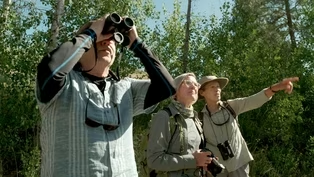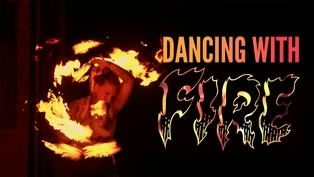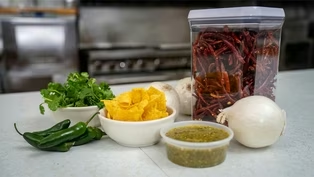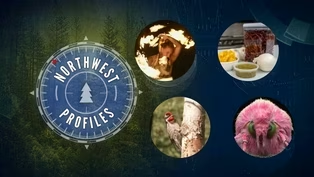Northwest Profiles
Bugs Best Friend
Clip: Season 39 Episode 1 | 7m 47sVideo has Closed Captions
Photographer Dara Ojo shares how a pandemic hobby turned into a passion seen around the world!
Meet Dara Ojo, a macro photographer and conservation storyteller from Edmonton, Canada, who captures the hidden beauty of arthropods. Through his lens, Dara reveals how these tiny creatures play a massive role in our planet’s ecosystems. His stunning close-up photography bridges art, science, and conservation, inspiring people to see bugs not as pests, but as essential heroes of nature.
Problems playing video? | Closed Captioning Feedback
Problems playing video? | Closed Captioning Feedback
Northwest Profiles is a local public television program presented by KSPS PBS
Funding for Northwest Profiles is provided by Idaho Central Credit Union, with additional funding from the Friends of KSPS.
Northwest Profiles
Bugs Best Friend
Clip: Season 39 Episode 1 | 7m 47sVideo has Closed Captions
Meet Dara Ojo, a macro photographer and conservation storyteller from Edmonton, Canada, who captures the hidden beauty of arthropods. Through his lens, Dara reveals how these tiny creatures play a massive role in our planet’s ecosystems. His stunning close-up photography bridges art, science, and conservation, inspiring people to see bugs not as pests, but as essential heroes of nature.
Problems playing video? | Closed Captioning Feedback
How to Watch Northwest Profiles
Northwest Profiles is available to stream on pbs.org and the free PBS App, available on iPhone, Apple TV, Android TV, Android smartphones, Amazon Fire TV, Amazon Fire Tablet, Roku, Samsung Smart TV, and Vizio.
Providing Support for PBS.org
Learn Moreabout PBS online sponsorshipThe more professional I get, the more picky I get with what I shoot.
I can go out pretty much in one day and not find anything that satisfy me, you know?
It's not like there are no arthropods out there, but I've taken something like this before.
What makes you different?
You know, it has to be maybe they are mating or a Wolf Spider carying babies on her back.
Something that makes it's more spectacular than what I already have.
So I get really picky now.
There you go.
Perfect.
Good pose.
My name is Dara Ojo.
I'm a macro photographer and conservation storyteller.
Macro photography is taking photos of small things and making them look big.
From insects to flowers to even currency, coin to snowflakes.
Anything that is tiny and just making it become magnified.
About five years ago, while I was living in China during the Covid 19 pandemic, I stumbled upon photography.
I was trying to find something positive to do.
So I started taking photos of birds.
And, a friend was like, have you tried looking for insects in China?
And it was very difficult trying to chase a dragonfly and these guys have like multiple lenses on the eye so they can see you coming from afar.
So it was quite frustrating.
But that's how I started macro.
As opposed to using the general language that every layman use insect.
So to be able to group everything together, we call them arthropods.
So arthropods are different classes of creepy crawlers, but I don't want to call them creepy crawlers.
Cute crawlers.
So from your scorpions, to your spiders, to your millipedes to your moth, your butterfly.
They are all classified as arthropods.
I need a spider, come on.
Insects and bugs and arthropods are at the bottom of the food chain.
So it's just like the foundation of a house.
So they are really important to all the ecosystem together.
So if there's a collapse, it has a ripple effect and every other thing collapses.
So they help us with pollination.
You know, apart from bees like everybody think, Wasp also pollinate.
Any insect that fly essentially can pollinate because pollination is just transferring pollen from one flower to the other.
One out of every three bites of food that we eat is contributed by insect.
So that means they are, part of our food security and food chain.
Secondly, they help us as indicators of water.
Just like you can see the woodland behind me.
If there are no dragonflies or damselfly, I know that there's something wrong with that water.
So every every insect has a part to play.
Therre you go buddy, thank you very much.
I don't do much post-production because I'm lazy like that.
Most of the photos you see are straight from my lens.
A bit of touch up here and there, which is just improving the color.
But when it comes to background, I actually carry physical color cards because I use artificial light flash.
If you do not add a bit of color, you're going to end up with black photos, black backgrounds.
As soon as I get my subject, cut off a bit of the branch, I put it on a clamp and I have the background card behind it, and that just gives me that sweet background that I'm looking for.
And most times the the subject always inspires the background.
So if I see that, okay, this is yellow, I think a blue would pop it up.
And that's essentially what makes it beautiful.
That background just takes it to the next level.
And the details that you see is, photo stacking.
because you get so close, you lose your depth of field.
And, to get all those sweet details, you need to focus stack, you know, taking photos from different depth of field from the closest spot of the camera all the way to the back.
I do post-production in Helicon Focus.
It stitches the photo together for you, and, it gives you a final output.
And that is thrown back into Lightroom where you can just, you know, improve the colors and sharpen the photo.
And that's it.
In 2022, I was just scrolling on Instagram and, I got a message pop up in my inbox that was one of the producers.
He would love to talk to me.
He called me out from New York that day, and he told me about the project that he was shooting.
Bugs from different part of the world.
And, he felt that my story was going to be perfect because I have zero background in sciences.
I'm in town, guys.
Come out.
What!
Thats so rude.
Turning a lens on this miniature world is how one man hopes to bring focus to the planet's unnoticed heroes.
You know, for me to be so interested in this.
And because most part of the show has to do with people with science entimology backgrounds.
I wouldnt say I have zero knowledge.
But I have no credentials in sciences.
I've, spoken to a lot of entomologists, and we've rubbed minds together.
I've taken up a course, Bug 101 at the University of Alberta.
So bringing in that perspective of someone that, you know, shows the beauty so you can develop empathy.
And when you pull people in with empathy, you're able to preach the conservation story to them.
So it was like, that's perfect.
You know, people, people can get bored of all the science lingo then now there's a bit of, art approach to.
I bridge Art, science and conservation through storytelling with my photos.
So beautiful.
Which is art, that pulls people in.
And I use science fact to preach the conservation story to people.
Then after people have listened.
Then you also use science practice to tell them, okay, this is what you can do.
Grow more wild flowers.
For example.
Stop squashing bugs.
That is the step art, science, conservation.
They'll work hand in hand.
Stay beautiful.
So I've seen a lot of comments from people saying that they view bugs differently now that they see my photo that comes to mind first when they see any arthropod and people are like, oh, well, I saw your photo.
And when next I saw an insect in my house, a spider I just gently took it out.
My first instinct was to kill it.
But then I remember your photo, and I just kind of changes my mind and that that's all I want to hear, because that kind of shows that I'm doing something right.
My last message to everybody is like, you know, that insect that crawl in six legged or four legged, creature in your house, or that you see in your classroom or on your path to work, just let it go.
Just let it be.
It has it has a purpose to serve.
Video has Closed Captions
Clip: S39 Ep1 | 7m 40s | We follow along with a birding group that gives Seniors an introduction to Birding with sound. (7m 40s)
Video has Closed Captions
Clip: S39 Ep1 | 5m 22s | In Spokane, Washington, a small troupe of fire dancers is lighting up the community — literally. (5m 22s)
Video has Closed Captions
Clip: S39 Ep1 | 4m 15s | Los Cinco Locos Salsa: How a Family Recipe from El Paso Became a Washington Favorite! (4m 15s)
Video has Closed Captions
Preview: S39 Ep1 | 30s | Fire Dancing, Los Cinco Locos Salsa, Insect Photographer, and Birding. (30s)
Providing Support for PBS.org
Learn Moreabout PBS online sponsorshipSupport for PBS provided by:
Northwest Profiles is a local public television program presented by KSPS PBS
Funding for Northwest Profiles is provided by Idaho Central Credit Union, with additional funding from the Friends of KSPS.


















